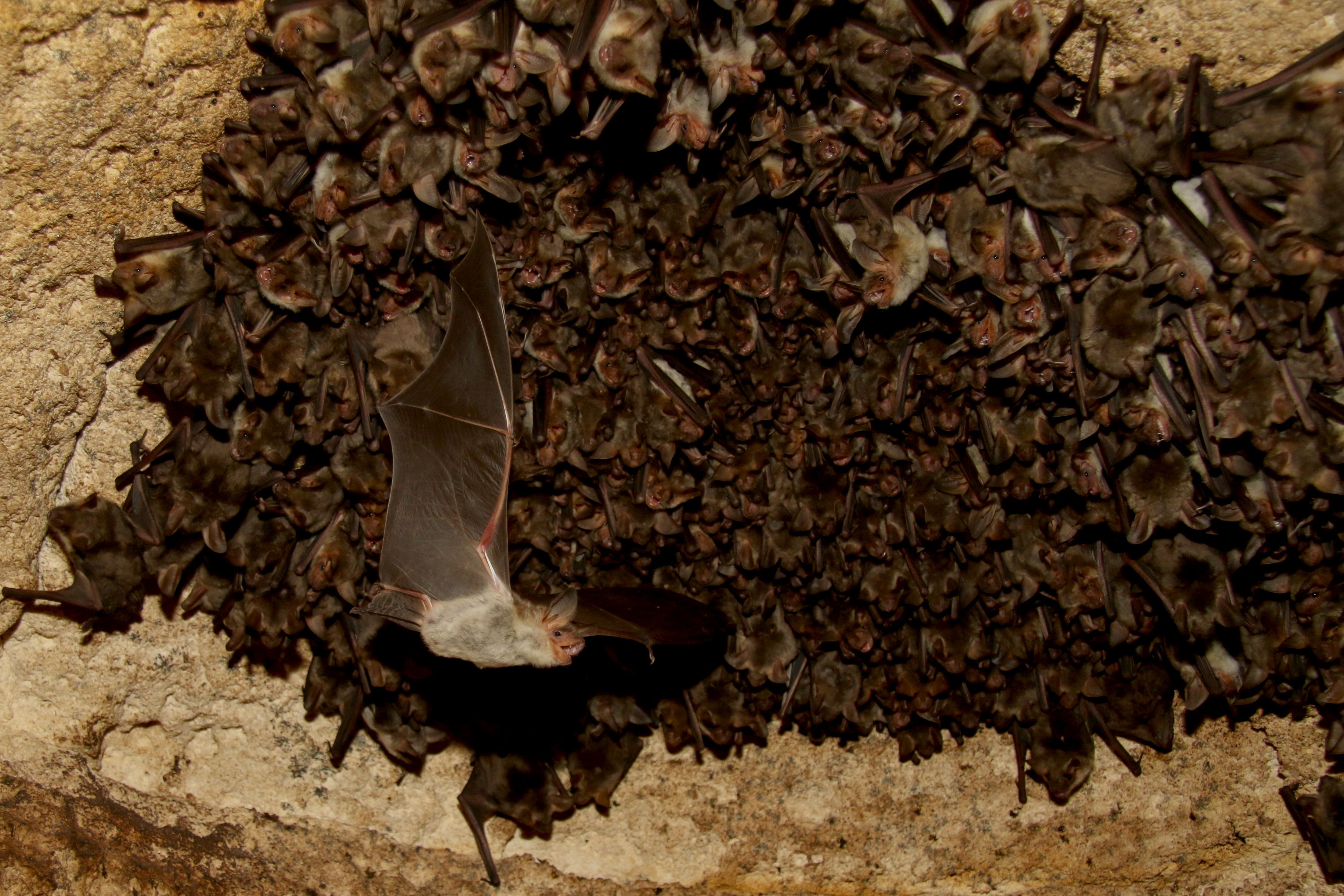Tiny computers reveal how wild bats hunt so efficiently
The bats' echolocation is more advanced than previously thought. Bats muffle their screams almost to a whisper when hunting, so echoes from trees and buildings do not drown out echoes from the prey. This is revealed by an international research team led by Aarhus University using miniature computers that they have put on the backs of wild bats.

An international research team has taken a seat on the back of wild bats to experience their world through echoes recorded on-board the bats by 3-gram computers.
In a new paper published in Science Advances, the research team from Aarhus University and the Max Planck Institute of Ornithology attached echo- and motion-recording tags to wild greater mouse-eared bats in Bulgaria.
“We experienced the world through the ears of the bats by recording their echoes directly on-board while they were hunting for insects at night,” said Dr. Laura Stidsholt, postdoc at Aarhus University and leading author of the study.
Facts:
- The study was conducted on 10 female greater mouse-eared bats at the Orlova Chuka cave in Bulgaria. These bats can weigh up to 35 grams, and they were not bothered by the electronic backpacks - which, incidentally, they were all freed from again. Albeit with some difficulty, for they are quite hard to catch.
- The study was funded by a Carlsberg Semper Ardens grant to Peter Teglberg Madsen and the Emmy Noether program of Deutsche Forschungsgemeinschaft to Holger R. Goerlitz.
Whispering bats
The tags recorded the echolocation calls and the movement of each bat in three dimensions, but most importantly, also the echoes returning from their environment during one full night of foraging. This allowed the research team to tap into the sensory scenes of a hunting animal.
“We wanted to use the tags to find out how bats control what they “see” when they hunt tiny insects on the wing on superfast timescales. We used the sound recordings to find and track echoes from prey and vegetation, and to our surprise, we found that the bats are guided by extremely weak prey echoes that would be like a whisper to us”, said Dr. Laura Stidsholt.
The bats themselves control the strength of their returning echoes by calling louder or weaker. So why would they choose these weak echoes, if they could increase the levels by calling louder?
Acoustic tunnel vision
To answer this, the researchers quantified the volume of air in which bats could potentially detect an echo for each echolocation call. The bats controlled the size of these sensory volumes by adjusting the strength of their calls.
“We found that hunting bats narrow their sensory volumes by more than a thousand times to only focus on the prey and thereby reduce the clutter from other echoes. It’s like an acoustic version of a tunnel vision that briefly makes their world much simpler”, said Dr. Holger Goerlitz of Max Planck Institute of Ornithology, a co-author of the study. He continued:
“The weak prey echoes might therefore be a consequence of the small sensory volumes shaped to hunt close to background clutter”.
To protect these weak echoes from interference, the research team also showed that the bats used their flight patterns to separate the prey echoes from the background e.g. by flying parallel to trees.
Precise flight adjustments
“When the bats are hunting, they stay at least a prey detection distance away from the vegetation. We think they do this to avoid masking of the weak prey echoes by the loud echoes from vegetation. By continually adjusting both their flight patterns and their sensory volumes during the hunt, the bats simplify the information they need to process", said senior author Professor Peter Teglberg Madsen of Aarhus University.
Peter Teglberg Madsen suggests that the bats dedicate their attention and brain to the most essential information - getting their next meal - and that this might be one of the reasons that bats are such efficient hunters.
The miniature tags were designed and developed by Associate Professor Mark Johnson at Aarhus Institute of Advanced Sciences.
In the video below, Laura Stidsholt tells about the work of eavesdropping on bats' hunting technique:
Small recorders – big challenge
“It was a real challenge to make a computer so small that it could work on a flying bat and still be sensitive enough to pick up these weak sounds”, said Mark Johnson.
Echolocating bats account for 20 percent of all mammal species and play important roles in ecosystems across the planet.
“We think that this strategy has expanded the niches available to look for insects and is one of the reasons that bats have become such versatile hunters, but we don’t know if they are versatile enough to cope with all the changes humans are making to the environment”, said Professor Peter Teglberg Madsen.
Contact
Postdoc Laura Stidsholt
Department of Biologi – Zoophysiologi
Aarhus University
Mail: laura.stidsholt@bio.au.dk
Mobile: +45 2871 7824
Professor Peter Teglberg Madsen
Department of Biologi – Zoophysiologi
Aarhus University
Mail: peter.madsen@bio.au.dk
Mobile: +45 5177 8771
